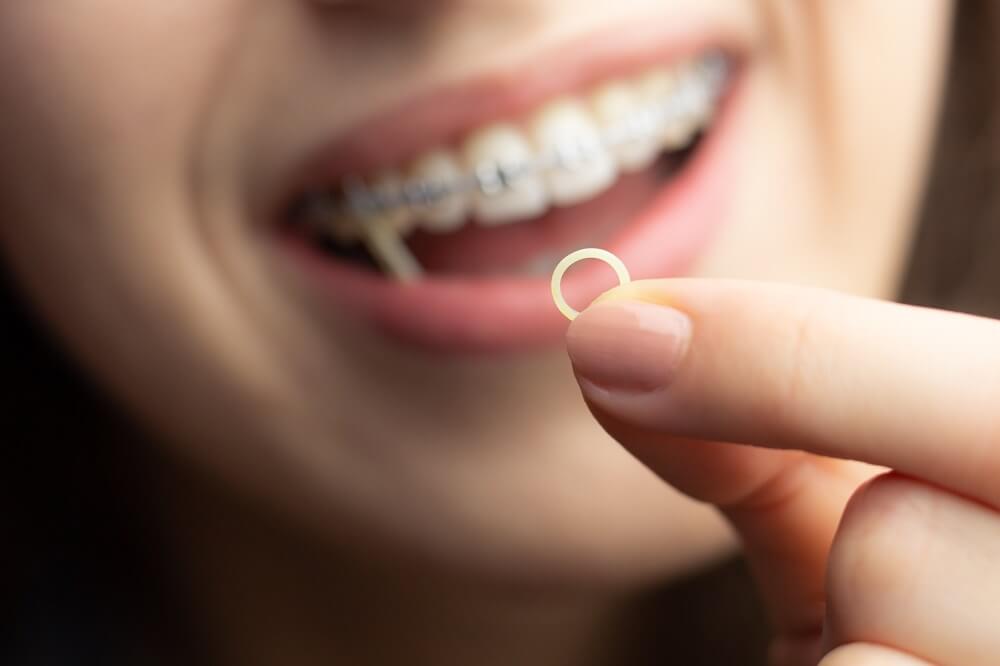If you’re a patient at Camellia Orthodontics, chances are that Lafayette and Opelousas orthodontist Dr. Diana Bozner will instruct you to wear elastics at some point during your treatment. But what are they for? How do they work? Why do they matter? And how should you care for your braces if you do get elastics? Read on to get answers to all of these questions and more.
WHAT ARE ELASTICS?
As the name suggests, orthodontic elastics (or just elastics for short) are small, thin, rubber bands. There are different types, but they all look very similar. They consist of a thin loop of medical-grade latex. Your orthodontist will attach them to your braces by stretching them over tiny hooks on the brackets of your upper and lower teeth.
UNDERSTANDING THE PURPOSE OF ELASTICS
So, what are elastics for, and why are they needed for your treatment? Simply put, elastics help place pressure on different teeth, which directs them to move into the proper position.
Along with the brackets and wires of your braces, elastics may be necessary to correct certain problems with your bite and the alignment of your teeth. There are a variety of elastics available, which place different amounts of pressure on your teeth.
And depending on your case, you may need to wear elastics full time (day and night) or just at night. It all depends on your unique treatment plan. By wearing your elastics consistently, you can ensure that your orthodontic treatment progresses according to Dr. Bozner’s plan.
THE DOS AND DON’TS OF ELASTICS
If you need elastics as part of your treatment plan at Camellia Orthodontics, there are a few “dos” and “don’ts” you should follow during your treatment:
DO
- Carry around extra elastics given to you at Camellia Orthodontics. It’s pretty common for elastics to stretch or break, and they will need replacement throughout the day.
- Remove your elastics before meals if they’re making it hard to open your mouth wide enough to eat. Just remember to put them back once you’re done eating.
- Wash your hands before and after replacing or removing your rubber bands.
- Wear your elastics as directed by Dr. Bozner. Wearing your elastics consistently can speed up your treatment and reduce the amount of time that you’ll need braces.
DON’T
- Don’t “double-up” your elastics, unless you are instructed to do so. Also, don’t wear the wrong type of elastics. This can exert too much pressure on your teeth.
- Don’t stretch your elastics or play around with them. Stretching them too much before putting them on your braces may reduce their strength and effectiveness.
- Don’t go to bed without a fresh set of elastics. And once you wake up, don’t forget to switch to a new set.
- Don’t buy your own elastics or use any other type of rubber band on your braces. There are different types of elastics, and using the wrong ones could affect your treatment. If you run out of elastics, call Camellia Orthodontics in Lafayette or Opelousas. We’d be happy to give you a new supply.
COME TO CAMELLIA ORTHODONTICS FOR BRACES IN LAFAYETTE AND OPELOUSAS
Orthodontic treatment with braces or Invisalign in Lafayette helps improve your oral health, reduce wear and tear on your teeth, and creates that picture-perfect smile. If you’d like a straighter smile in Opelousas or Lafayette, Dr. Bozner and the team at Camellia Orthodontics are here for you. You can give us a call at (337) 291-9141 (Lafayette) or (337) 948-3491 (Opelousas), or contact us online to schedule an orthodontic consultation.
